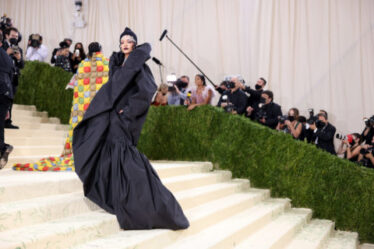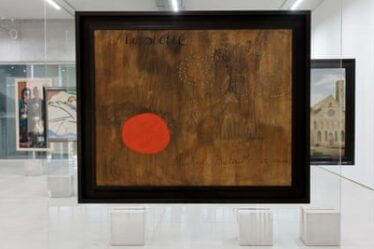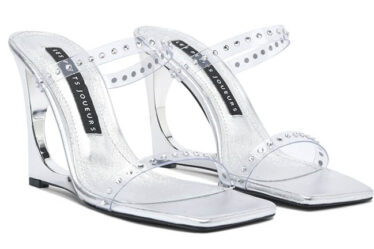Before Luke Fracher opened Luke’s, a resale business focused on used luxury and high-fashion menswear, in 2022, he was the co-owner of Round Two, which at its peak in the late-2010s was a mainstay of the resale market for hyped streetwear. The customers Fracher served back then are still buying from Luke’s today, except now, instead of exclusively buying Supreme, they’re more inclined to mix in Balenciaga, Rick Owens, Vetements or Louis Vuitton apparel by Pharrell or Virgil Abloh.
“The average consumer is just more educated now and has a better sense of self,” said Fracher, who just opened Luke’s second outpost in Los Angeles this month. “They used to come in and just buy a random $100 Supreme or BAPE tee. Now, people want certain items to complete their fit and are not grabbing stuff for the sake of grabbing it anymore.”
Despite the narrative to the contrary, streetwear isn’t dead and young consumers are not casting aside their sneaker rotation for a wardrobe full of loafers. While the market for brands like Supreme, Off-White and Palace has cooled, it’s still moving. What’s changed is the streetwear shopper is no longer a monolithic, head-to-toe brand loyalist. Instead, retailers and other experts say the young consumers who might have only bought graphic T-shirts and hoodies a few years ago are embracing a diverse wardrobe that mixes streetwear, heritage brands and traditional menswear or luxury.
“There’s a venn diagram between the customers for Wales Bonner-Adidas, Supreme and Bottega [Veneta],” said Jian DeLeon, Nordstrom’s men’s fashion director who was formerly the editorial director of the youth culture magazine Highsnobiety. “They might aspire to buy one special piece from Bottega but are going to wear it with Carhartt pants and a graphic T-shirt from Pleasures or Supreme.”
At the multi-brand Asian streetwear retailer Invincible, for example, brogues from Thom Browne are now sold alongside Hoka sneakers. Co-founder Michael Vincent said the shop still sells streetwear staples like Stüssy and Neighborhood, which Vincent describes as a stable legacy brand, but the same consumers who bought Off-White graphic T-shirts and Nike Dunks a couple years ago have moved on to more expansive tastes.
“Now the consumer is more picky,” he said. “It’s more centred on individual style, and sneakers are no longer that ‘it thing’ to complete your streetwear look.”
What Streetwear Shoppers Are Buying — Or Not
The changes are also affecting where streetwear shoppers are directing their money. Many are being more discerning amidst turbulent global markets and the looming threat of a recession. Customers who’ve bought from Supreme directly in the past spent 9.1 percent less at apparel, accessories and department-store chains in 2023 compared to the prior year, and 7.7 percent less in roughly the first six months of 2024, according to an analysis of credit card data by Earnest Analytics.
This general drop in spending doesn’t mean consumers aren’t buying streetwear brands anymore. StockX reported that Fear of God and Supreme were still the most-traded apparel brands on the platform during the first six months of 2024. However, the fastest-growing brands during that time included New York-based label Denim Tears, Gucci and Asics.
Drew Haines, StockX’s director of sneakers and collectibles, said even as Millennial and Gen-Z shoppers continue to pay above retail for labels like Fear of God and Supreme, bargain hunters are fuelling a growing trade for luxury brands, and interest is growing in sportswear challenger brands like On as well as heritage brands like Timberland as interest in Nike Air Jordan 1s and Dunks declines.
“Where youth culture goes, culture will go. Youth will always gravitate towards these types of products and the status that they carry with them,” Haines said.
One shift he has noticed is that, even though Nike is still the top sneaker brand on StockX, customers are moving beyond its hyped collaborations.
“They’re looking for something that isn’t just what everyone else has,” said Haines.
This collaboration fatigue also led Vincent to diversify Invincible’s store’s assortment in Jakarta, Indonesia, rather than conceiving hyped partnerships. He says that while his customers in Indonesia — the world’s largest Muslim-majority country — are hyper aware of global style trends, they are also showcasing individualism by styling hijabs with streetwear and contemporary clothing and value dressing differently more than wearing the week’s hottest drop.
“Instead of having five pairs of hype sneakers, the trendy ‘it girl’ is now wearing jorts, a pair of ballet flats and a Stüssy T-shirt,” Vincent said.
Same Culture, More Consumer Options
At its core, streetwear is a category that’s still defined by its connection to niche subcultures and communities. That cultural connection still exists today, just in a different form than it used to.
When Ross O’ Hanlon helped develop Dover Street Market New York’s T-shirt space in 2016, he witnessed how graphic T-shirts by brands like Cactus Plant Flea Market resonated with a wide audience intrigued by emerging brands with low-priced products. But today, he finds that the T-shirts, hoodies and hats that served as the original blank canvas for streetwear have been replaced by any product with a story behind it — the modus operandi of brands such as Denim Tears, which is centred on telling Black stories through clothing as much as Wales Bonner.
“Whether it’s the niche cultures around the clothing that they wear or the communities involved, it’s coming from a personal interest outside of the clothing itself,” said O’Hanlon, who now works as a senior buyer at streetwear retailer Concepts.
DeLeon pointed out that shoppers are still looking for small, independent brands putting out limited-edition products, only now that scarcity more often is a product of how the clothes are made. He pointed to brands like Drake’s, Stòffa and 18 East that pride themselves on craftsmanship that can’t be mass-produced.
That’s not to say brands trafficking in streetwear’s typical codes have faded away. StockX’s Haines noted that labels such as Sp5der and Hellstar are rising fast. And the names that defined the category are still around, including Supreme, even as it’s been bought and sold multiple times. Fracher of Luke’s said they continue to sell pieces from Supreme — especially older items — as well as Palace and Off-White.
Logoed apparel will continue to serve as a membership badge for the consumers who recognise it. The broader tastes of streetwear shoppers today just mean more competition and more variety.
“Back then, you only had Supreme and two other brands,” Vincent said. “Now, the streetwear consumer has options.”



